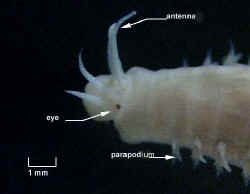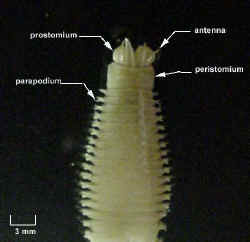 Prostomium
Prostomium
Prostomium has 1-5 occipital antennae.
Palps are variable in different species. They
can be of digitiform or globular form, but in most species, the two palps
are completely fused one to the other. The anterior margin of the
prostomium then appears to be smoothly rounded.
Muscular pharynx armed with a ventral pair of mandibles and
toothed maxillary plates.

 Structure of
Prostomium
Structure of
Prostomium
 Prostomium
Prostomium
with 5
antennae
